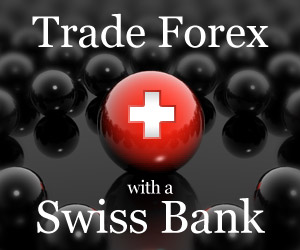Understanding Mutual Fund Prices
This article reveals which are the factors that determine mutual fund prices and how they are calculated.
Mutual funds represent an indirect type of investment in capital markets. Instead of buying stocks of particular companies on the stock exchange, some investors especially with lower budgets prefer to invest in mutual fund, which has a portfolio of several stocks. The main reason for mutual funds success is low transaction fees, since they normally do not charge a minimum fee in absolute terms and high diversification. Just think of a person, who has $500 and would like to build a diversified portfolio of technology stocks: Google, Apple, Cisco, IBM, and Hewlett-Packard. It is practically impossible for this person to buy stocks directly, since only Google stock is worth over $500. Instead, this same person can afford to buy a mutual fund, which is targeting technology stocks. There are many out there available and investor should not have any problems picking one of them. It is true however, that their portfolios are not built just out of five wished stocks, but they are far more diversified because of the risk reduction.

Anyway, mutual funds are an important investment instrument for years. There are several mutual funds types to choose from. Some invest in stocks, large-cap, small-cap, mid-cap, all-cap stocks, emerging markets, developed markets, other in bonds, real estates, commodities (gold, silver, industrial) currencies, any combination and so on; only sky is the limit when it comes to financial innovation regarding portfolios. The point is that they all have a portfolio of investments, which are combined with the goal to keep track of some index. Now, the question is, how are mutual fund prices calculated from their portfolio?
Well, first of all it must be clearly said, that unlike stocks or Exchange Traded Funds (ETFs), which do trade on the stock markets and have real-time prices, this is not the case with mutual funds. Their price is calculated only once a day and the procedure is quite simple. Every day after the market close mutual funds and their custodies sum the value of all of fund's investments. To be more specific, the multiply every stock position with the closing price and finally sum up all the positions in the portfolio, to get the figure named Net Asset Value (NAV). For example: The fund has 1,000 shares of Microsoft, closing price $26.98, value $2,698; 1,000 shares of Cisco, closing price $16.53, value $1,653, and so on. Finally the sum up all the positions: Microsoft $2,698 + Cisco $1,653 + ... = 100 million U.S. dollars. This is how the value of mutual funds portfolio is calculated every day.
In the second step, each mutual fund manager knows exactly how many mutual fund units are sold or redeemed. Let's say that 10 million units are currently held by investors. Mutual fund custodians are calculating the value or price per unit every day, so called net asset value per share (NAVPS). In our example we simply divide $100 million worth portfolio with $10 million units sold and we get the price of $10 per unit. This is the price new investors of the fund will have to pay for one unit of the fund and this is the price you will get per unit if you decide to step out of the investment in the fund (entrance and exit transaction fees are ignored in this simplified calculation). With all the money that inflows to the fund every day, funds portfolio managers expand their portfolios with fresh direct investments and the way around; if more investors decide to exit the fund, some of the fund's assets are sold in order to get the money to pay out these investors.
As you might find out so far, mutual fund prices depend solely on the prices of their underlings. There is no bid and ask volume influencing them. However, the prices of underlings depend on all the factors that influence capital markets, like market sentiment for example. While some stocks advanced today, other declined and mutual fund prices are calculated based on these movements.
You can find the latest prices of mutual funds on WSJ.com.
Written by: Goran Dolenc
Do you find this content useful? Like! Tweet! Recommend! Share!
Back from Mutual Fund Prices to Best Mutual Fund
Back from Mutual Fund Prices to Best Online Trading Site for Beginners home page







